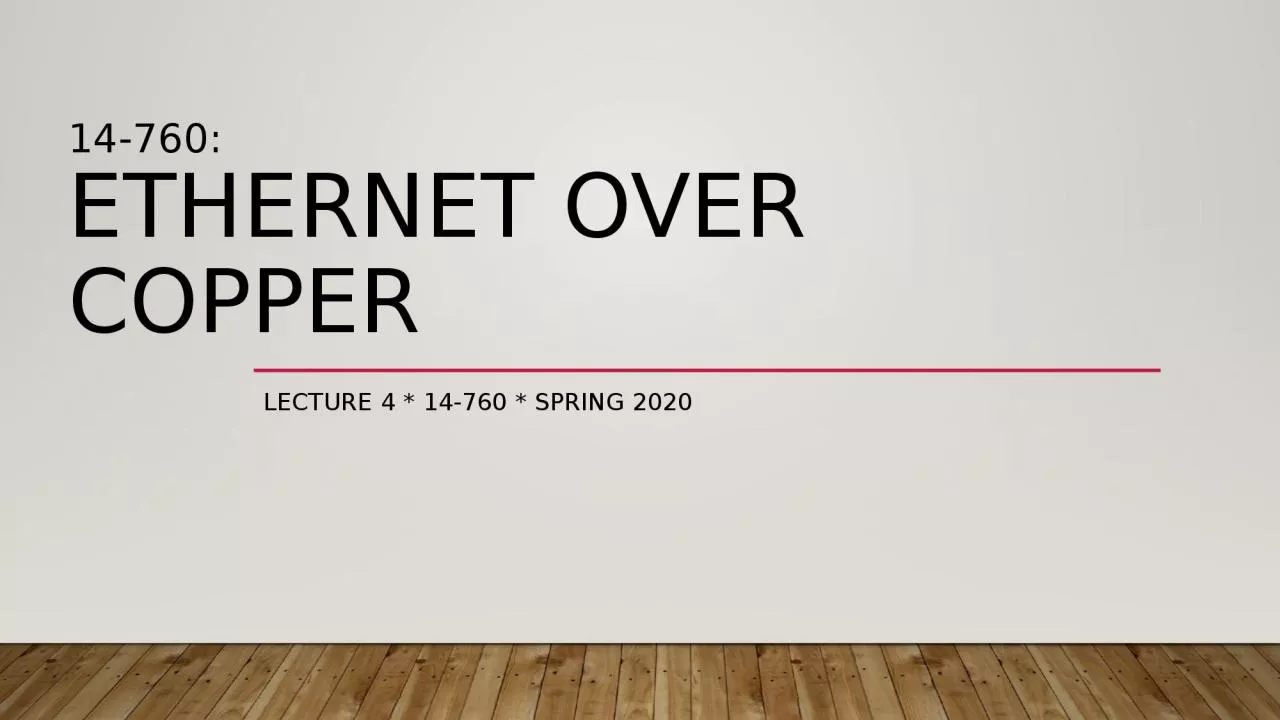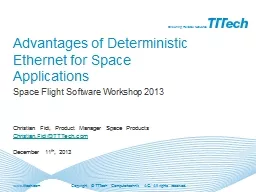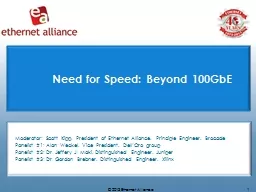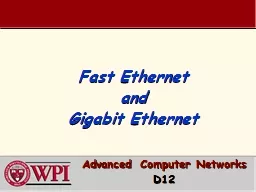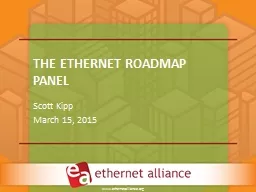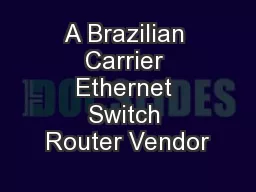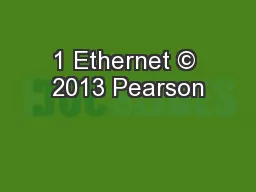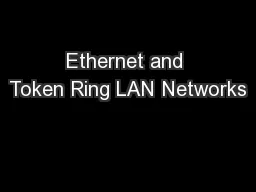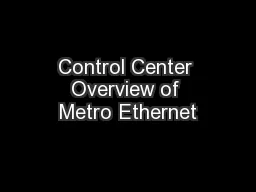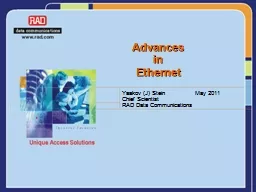PPT-14-760: Ethernet over Copper
Author : jordyn | Published Date : 2023-11-12
Lecture 4 14760 Spring 2020 Quick History Pure Aloha Satellite Circa 1970 Originally developed for terrestrial radio at Univ of Hawaii it illustrates the principles
Presentation Embed Code
Download Presentation
Download Presentation The PPT/PDF document "14-760: Ethernet over Copper" is the property of its rightful owner. Permission is granted to download and print the materials on this website for personal, non-commercial use only, and to display it on your personal computer provided you do not modify the materials and that you retain all copyright notices contained in the materials. By downloading content from our website, you accept the terms of this agreement.
14-760: Ethernet over Copper: Transcript
Lecture 4 14760 Spring 2020 Quick History Pure Aloha Satellite Circa 1970 Originally developed for terrestrial radio at Univ of Hawaii it illustrates the principles of a contentionbased . 20 1027200 1048830 1054860 1081860 1126920 1137390 1180200 1192470 1229340 1282710 O7 826440 864840 882600 896730 922290 947580 976770 1005900 1035120 1126920 1204380 O6 612540 672960 717120 717120 719850 750720 754770 754770 797670 873510 918030 O5 Ethernet. Most successful local area networking technology of last 20 years.. Developed in the mid-1970s by researchers at the Xerox Palo Alto Research Centers (PARC).. Uses CSMA/CD technology. Carrier Sense Multiple Access with Collision Detection.. Space Flight Software Workshop 2013. Christian Fidi, . Product. . Manager Space Products. Christian.Fidi@TTTech.com. . December 11. th. , . 2013. Ethernet a Worldwide Standard . Worldwide . used. , . Panelist #1: Alan . Weckel. , Vice President, . Dell’Oro. group. Panelist #2: Dr. Jeffery J. Maki, Distinguished Engineer, Juniper. Panelist #3: Dr. Gordon . Brebner. , Distinguished Engineer, Xilinx. and. Gigabit Ethernet . Advanced Computer Networks. D. 12. Fast/Gigabit Ethernet Outline. Fast Ethernet. 100 BASE T4. 8B/6T encoding. 100 BASE TX. 100 BASE FX. Collision domains. Gigabit Ethernet. 1000 BASE SX. PAnel. Scott . Kipp. March 15, 2015. Agenda. 11:30-11:40 – The 2015 Ethernet Roadmap – Scott . Kipp. , Brocade . 11:40-11:50 – Ethernet Technology Drivers - Mark . Gustlin. , Xilinx. 11:50-12:00 . Brief History:. 1998 – Foundation in October – started with simple E1 . interface converters. 1999 – Started project of . DmView. Network Management . System. 2000 – Launch of E1 multiplexer, first more complex product. . Characteristic. Local Area Network (LAN). Wide Area Network (WAN). Location. Located entirely on customer’s premises. Must carry transmissions beyond customer’s premises. Consequence of Location. Developed in the mid-1970s by researchers at the Xerox Palo Alto Research Centers (PARC).. Uses CSMA/CD technology. Carrier Sense Multiple Access with Collision Detection.. A set of nodes send and receive frames over a shared link.. Balazs Voneki. CERN/EP/LHCb Online group. TIPP2017, Beijing. 23.05.2017. LHCb Upgrade. Early results of RDMA optimizations on top of 100 Gbps . Ethernet, TIPP2017, Beijing, 23.05.2017 . – Balazs Voneki. Local Area Network. local area network (LAN) is a computer network that is designed for a limited geographic area such as a building or a campus.. The . three upper layers are common to all LANs.. The LANs differ in the 2 lower layers. . 2014. 2. Control Center Benefits. View and manage your CenturyLink Metro Ethernet services,* access vital data including inventory details, statistics, and status reports.. Monitor the health and status through a visual rendition of your network.. Advances in Ethernet Yaakov (J) Stein May 2011 Chief Scientist RAD Data Communications AdvEth Slide 2 Outline Modern Ethernet VLANs and their uses Ethernet services Add-on CardPart NumberAdd-on CardAOM-CTG-i2SMMicroLP 2-Port 10GbE SFP+ adapterRiser CardAOM-RSC-E8RMicroLP Riser Card for MicroCloud 12 nodeBracketMCP-240-93913-0NMicroLP bracket for MicroCloud 12 nod
Download Document
Here is the link to download the presentation.
"14-760: Ethernet over Copper"The content belongs to its owner. You may download and print it for personal use, without modification, and keep all copyright notices. By downloading, you agree to these terms.
Related Documents

